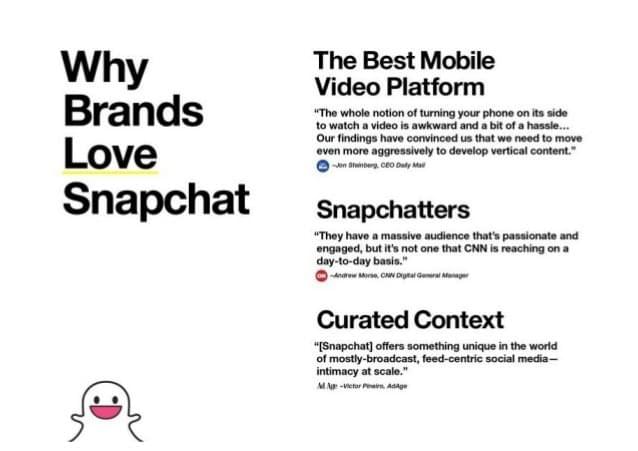Article • 8 min read
How to create the best sales deck ever: Meaning and examples
Learn the best strategies for creating a sales deck that makes your pitches and presentations into surefire conversion strategies.
Par Donny Kelwig, Contributing Writer
Dernière mise à jour April 15, 2022
If your sales pitch is expertly defined but you’re struggling to close the deal, you might need a sales deck makeover. A strong pitch with confusing or irrelevant support materials only leads to client confusion and plunging sales.
Let’s fix that. In this piece, we’ll cover what is meant by a sales deck, its purpose, and how to make yours stand out.
What is a sales deck?
A sales deck is a slide presentation used to accompany a sales pitch and/or demo. It’s usually produced in a slide format (such as Microsoft PowerPoint or Google Slides) and enhances a pitch with visual aids that tell the story of your company. You might have heard sales decks referred to as sales pitch decks, but they are largely interchangeable terms. Either way, the sales deck is an essential sales skill you must master to be successful in sales.
The key to your sales deck, and the part that most companies get wrong, is that it’s not identical to your pitch. Just like a slide presentation enhances a lecture or a keynote speaker, your sales deck enhances your sales presentation. Your pitch is about products and pain points, while your sales deck is your story.
Why use a sales deck?
There are several key reasons to use a sales deck to reach your prospects and close sales:
- People absorb information in different ways, but studies show that we process visuals 60,000 times faster in our brains than text. Even if your sales deck is nothing more than pictures of your product (we don’t recommend this, by the way), you will still have significantly more success than not having a sales deck at all.
- Sales decks make you look more prepared and competent. Nearly 57 percent of B2B clients report that they feel sales teams are underprepared for their first meeting. A good sales rep can make up a decent pitch on the spot, but the use of a sales deck demonstrates that your company took the time to present better information.
- 88 percent of executive buyers these days want a conversation, not a presentation. That’s great, but the buyer still needs crucial information about your product and your company before purchasing. A sales deck enables you to have that conversation while also presenting the necessary information to your client.
Now that we know why sales decks make a difference, let’s take a look at a strong example.
Sales deck example
Here’s the first half of a Snapchat sales deck and how it succeeds in sales psychology. Slideshare also has additional sample business sales decks if you want variety.
Slide 1: This includes Snapchat’s signature ghost graphic, features minimal text, and speaks to the pain point of marketing to younger generations.

Slide 2: This slide is simple, straightforward, and not about the product. It doesn’t matter what Snapchat does, it matters that the company reaches 60 percent of this prospect’s audience.

Slide 3: Again, it’s not about pushing the product. This deck hasn’t said once what Snapchat actually does. That’s the pitch’s job.

Slide 4: This is a great, simple deck slide. This slide tells the prospect not just about Snapchat but also about their target audience. If the prospect decides to move forward with advertising on Snapchat, they know the types of ads their marketing team will need to make.

The motherlode of sales email templates
We’ve compiled 24 email templates that cover every sales pipeline stage, from prospecting to closing.
Slide 5: This is an effective slide because it addresses the competition. Again, it doesn’t matter what Snapchat does; it matters that the prospect’s competition is seeing results from it.

Slide 6: The number of users isn’t new information, but it’s a good slide because it enables the presenter to focus on a pitch point while the prospect is not distracted by new information.

You’ll notice a few key themes in this deck. Consistent coloring, graphics, and an emphasis on the client make these slides a great addition to a pitch. This is also a very adaptable deck. These benefits apply to multiple clients at multiple points in the sales pipeline. With slides like these running in the background, the sales rep can feel free to nail their key points knowing they’re supported with positive visual reinforcement.
How to create the best sales pitch deck ever
Creating your best sales pitch deck is a process of refining and experimenting, but there are a lot of fundamental dos and don’ts to help guide you. We’ll list those below, but keep in mind, the best thing you can do for your sales deck is to think like a buyer. You love your product and naturally want to list every single aspect of it because you think it’s interesting, but would you feel that way as a client?
If your company decided to purchase new computers for the marketing department, what would you need to know? Chances are, you’re likely using the same brand out of history and loyalty, so you don’t need a mission statement or a full history of the brand. You also don’t need to know anything about the system other than how it will help your marketing team and address pain points. How fast can it process graphics? Is it compatible with your current video and photography software?
By looking at your sales deck through the eyes of your client, you’ll not only streamline your presentation, but you’ll also be better able to address their specific needs. When a prospect senses that you took the time to think about their pain points, they listen—and they buy.
DO:
- ✓ Customize and personalize your sales deck to meet different client demands
- ✓ Build your storyline throughout the presentation to hold interest
- ✓ Use branded visual content with very little text
- ✓ Vary your content for live vs. online presentations
- ✓ Research your customer before creating your sales deck
- ✓ Pick three benefits to focus on
- ✓ Use a template if you don’t know where to start
DON’T:
- X List out product features instead of focusing on your story
- X Cram too much information on one slide
- X Use more text than imagery
- X Use the exact same sales deck for all presentation scenarios
- X Assume you know where all buyers are coming from
- X Try to hit every single point in one pitch
- X Create poor visuals if you don’t have a graphics team
Key elements
Don’t forget to include your key sales deck elements:
Cover slide
Elevator pitch
Story narrative (your client’s journey from struggle to success with your product)
Proof (statistics, testimonials, case studies)
Call to action (CTA)
Online sales deck tips
As 2021 showed, the shift to online and digital work isn’t going away anytime soon. In some ways, this is a fantastic opportunity for sales. With geography and travel expenses out of the way, sales reps and companies can access clients with more ease and for less money. On the other hand, online presentations and pitches come with their own set of challenges.
When you’re on a screen rather than in-person, it’s much easier for viewers to get distracted by work, texts, messages, or other technological pulls. Online sales pitching and online sales decks are their own game, so we’ve compiled a series of tips to make sure your sales deck excels at home as well as from the office:
- Make your sales deck interactive. Include polls, votes, or word clouds that your prospects can actively participate in.
- Get your prospects on camera. Too often, prospects will turn off their cameras for privacy. That’s a problem. While there is a line and boundaries must be observed, the minute a client isn’t on camera, they’re more than likely not paying attention. Encourage them to turn those cameras on.
- Ask questions during the presentation, and invite questions throughout. Don’t save all your questions for the end, and don’t make prospects wait on urgent inquiries. Instead, use them to spark engagement.
- Don’t make it longer than it needs to be. From elementary schoolers to executives, everyone experiences screen fatigue, and no one wants to be stuck in a meeting any longer than absolutely necessary. Keep it short, sweet, and to the point. If your prospect moves into the next phase of the pipeline, you’ll have plenty of time with them later.
Use a CRM to perfect your sales deck
The art of the sales deck is knowing who you’re talking to and where they are in the pipeline. The key to tracking your clients and managing this data? A powerful CRM. With Zendesk Sell, you can oversee client communication and easily access relevant sales analytics. Whether you’re dealing with a new prospect or a returning buyer, Zendesk makes it simple to keep tabs on their entire history so you know which pain points to hit and which sales deck slides will do the trick.
Request a demo today and see how a CRM with sales engagement tools turns your sales decks into client blueprints for the rest of your sales career.
